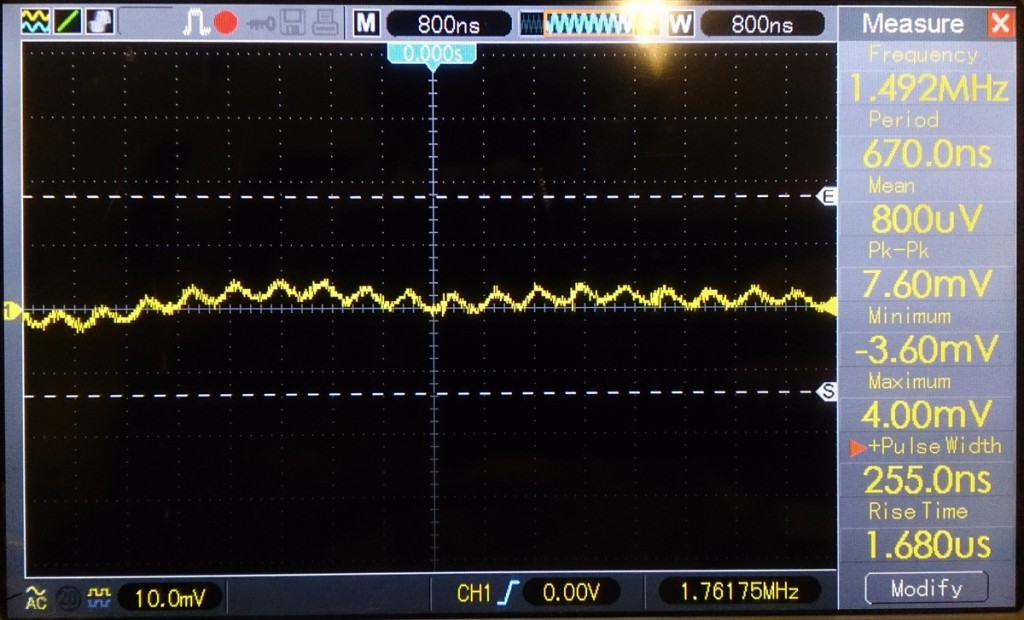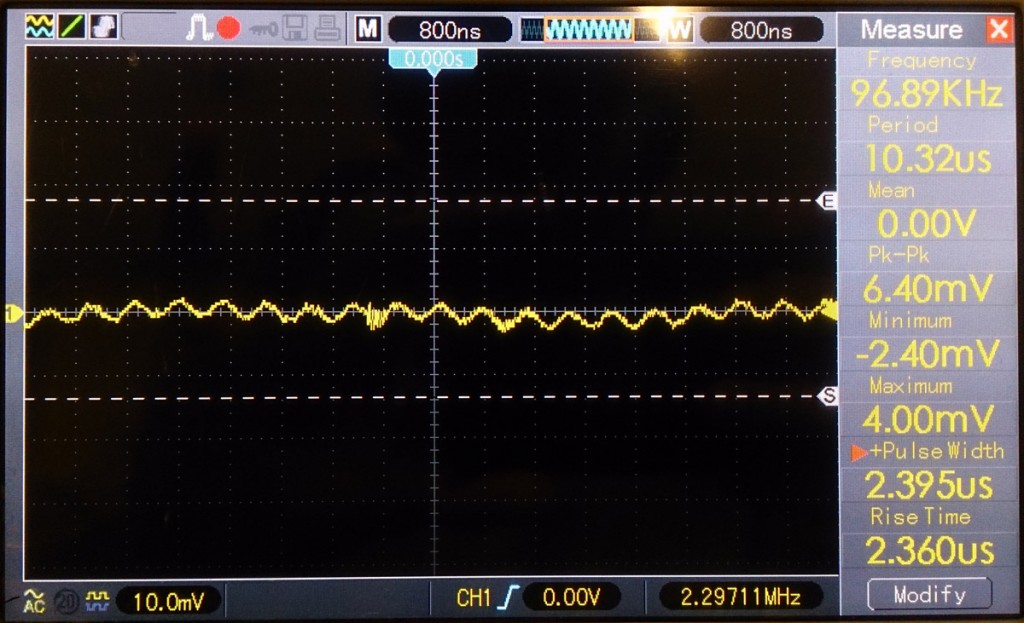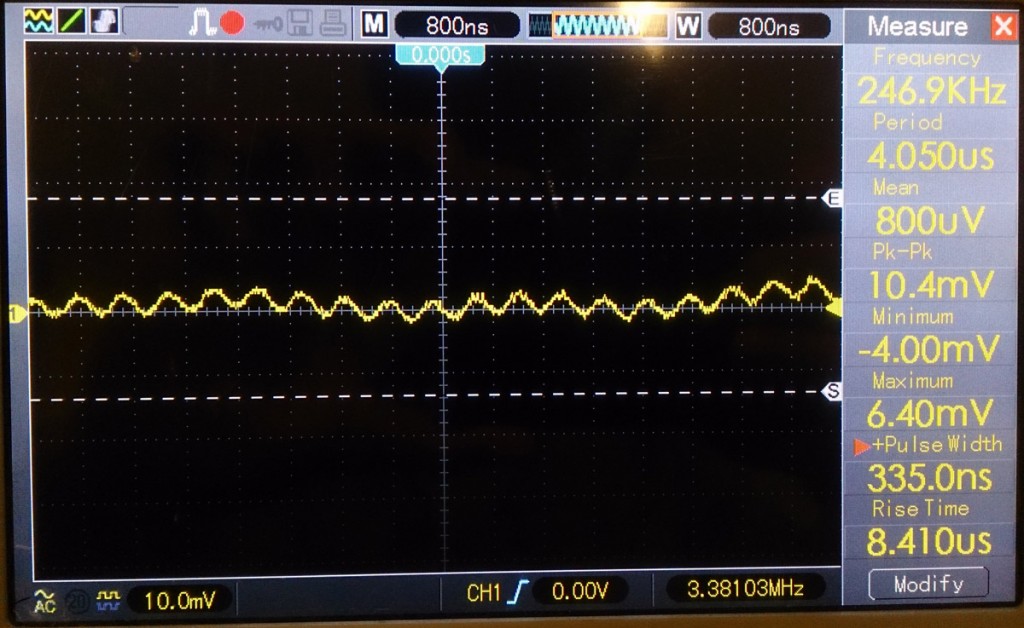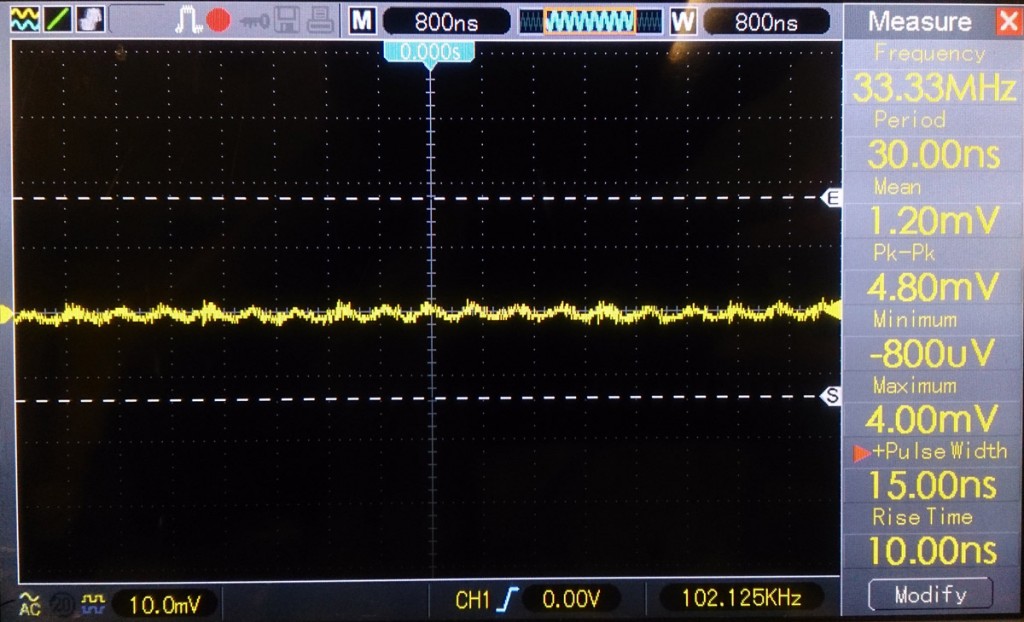Review & Teardown of Xiaomi 10400mAh Powerbank [NDY-02AD]
Page 3 : Benchmarking [Output Quality]
The testing methodology that I used for benchmarking a powerbank is charge the powerbank fully, load it with my DIY dummy load tester (consisting several resistor attached to heatsink), load it with Xperia Z (my current phone), and note the Voltage, Current, and the ripple voltage
Gears that I use when testing this powerbank:
Voltmeter : Sanwa CD800a calibrated to PC500a
Amperemeter : Sanwa PC500a with TL-23a high-current cable
Digital Oscilloscope : Hantek DSO5102
Load : DIY Resistor Dummy Load & Sony Xperia Z
Thanks to CE Lab @Binus university for lending the oscilloscope!
Result :
Voltage regulation is excellent (just -3.8% at 2.5 Ohm test). USB Specification tolerance is up to 10%. Voltage regulation isn’t a concern, as long as it doesn’t overvoltage – is shouldn’t harm your phone. If it’s undervolt – your phone just charge slower than usual.
Voltage ripple is amazing – only topped at 10.4mVpp and it’s lowered if you’re charging a phone (might be because the phone have some smoothing capacitors too) it’s only 4.8mVpp when it’s charging Xperia Z! Compared to 40mVpp on original Sony Charger! Most of other powerbank I’ve tested averaging around 100mVpp, and the worst is 180mVpp
Voltage ripple is the one that I concerned about powerbanks and cheap phone charger. Because it’s not easy to surpress the ripple, and ripple known to break components (capacitors, ICs, Power Gauge/Amperemeter reading on phone, etc).
Some screenshot from the Oscilloscope (sorry for not using the screenshot function, the one that I borrow have the USB port not working… sigh)
[click for larger image]




